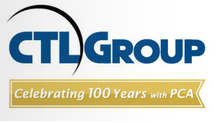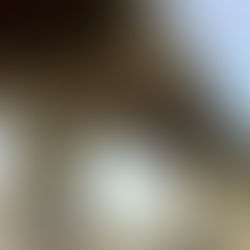Corrosion Damage & Assessment in Concrete Structures
THE PROCESS OF CORROSION
Corrosion is a natural process, which converts a refined metal to a more chemically-stable form. It is the gradual destruction of materials by chemical and/or electro-chemical reaction with their environment. In the presence of water and oxygen, corrosion takes place around the steel rebars in reinforced concrete as the structure ages.
Concrete provides an ideal protective environment to steel from corrosion. Due to high initial alkalinity (a typical pH higher than 12) a thin passive film is automatically formed on the surface of steel which effectively stops corrosion. This passive film does not actually stop corrosion, but reduces the corrosion rate to an insignificant level. For steel in concrete, the passive corrosion rate is typically 0.1 µm per year. Without the passive film, the steel would corrode at rates at least 1,000 times higher (ACI222 2001). When exposed to chlorides or when the pH is reduced due to carbonation (below 10), the passive film breaks down allowing the corrosion to start. The volume of rust, which is the by-product of corroded steel rebars, is much greater than of steel (up to 8 times). Rust will then exert internal pressure on the concrete causing it to crack and damage surrounding concrete. These cracks will allow more chloride to penetrate and a faster rate of carbonation, which will eventually speed up the corrosion process.

CORROSION ASSOCIATED DAMAGE
If left untreated, the rust will increase and with it the internal stresses, initiating cracks on the steel/concrete interface. As time pass the corrosion product will build up and cause more extensive cracking until the concrete breaks away from the bar, eventually leading to spalling. When a steel rebar loses more than 20% of its section, it will have to be replaced during the repair works.
Once initiated, the process of corrosion results in deterioration and distress in the concrete member, exposing its structural integrity. Here are the various deterioration stages of the reinforced concrete member:
Stage 1: Formation of white patches (due to carbonation)
Stage 2: Brown patches along reinforcement (rust seeping to the surface)
Stage 3: Occurrence of cracks (hairline cracks on the surface)
Stage 4: Formation of multiple cracks (wider cracks and delamination)
Stage 5: Spalling of cover concrete (total loss in bond between steel and concrete)
Stage 6: Snapping of bars (stirrups & connections first)
Stage 7: Buckling of bars and bulging of concrete (if in compression)
Stage 8: Structural failure and collapse

According to Prof. Ueli Angst, from the Institute for Building Materials in Zurich, corrosion is responsible for up to 90% of damage to reinforced concrete structures. Hence, inspecting and testing assets regularly is a healthy practice to detect and prevent corrosion. Once initiated, corrosion can still be controlled by performing a number of specialized repair and remedial works.
TESTING FOR CORROSION
Apart of the expensive, destructive, and time consuming laboratory corrosion testing which depends on samples extracted from the site, they are a number non-destructive testing technologies that can help deliver more accurate results, as well as cut down on regular testing costs.
One of the NDT technologies is the half-cell potential test, which is the only corrosion monitoring technique standardized by ASTM. It is used to determine the probability of corrosion within the rebar in reinforced concrete structures. Another NDT technology creates contour maps of corrosion rate values by measuring the true polarization resistance of the steel rebars without the need to drill a hole to connect to the rebar directly.
These non-destructive methods are critical to the success of rehabilitation projects or to the repair works of deteriorating concrete structures.
References
CIVILBLOG.ORG. Suryakanta Padhi. “How to Prevent Corrosion of Steel in Concrete?”. http://civilblog.org/2016/03/07/how-to-prevent-corrosion-steel-in-concrete/ [viewed on August 26, 2018].
Giatec. Roxanne Pepin. “Understanding the Process of Corrosion in Concrete”. https://www.giatecscientific.com/education/understanding-concrete-corrosion/ [viewed on October 17, 2018].
ACI Committee 222, Protection of Metals in Concrete Against Corrosion, ACI 222R-01, American Concrete Institute, Farmington Hills, Michigan, 2001, 41 pages.
NIST. Image Credit: Per Loll, Denmark https://www.nist.gov/news-events/news/2017/04/move-over-superman-nist-spectral-fingerprinting-sees-through-concrete-0 [viewed on October 23, 2018].
The Constructor. “Corrosion of Steel Reinforcement in Concrete – Causes and Protection”.https://theconstructor.org/concrete/corrosion-steel-reinforcement-concrete/6179/[viewed on October 19, 2018].






















